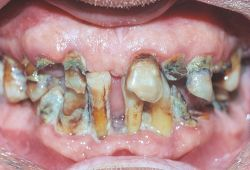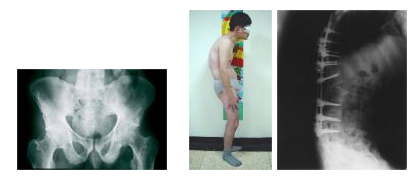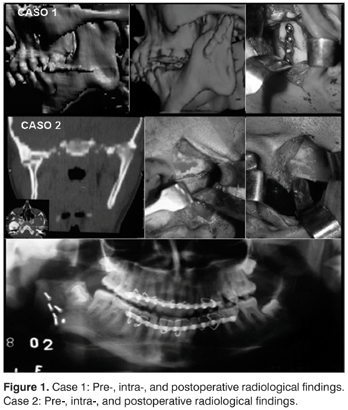Introduction
Ankylosis is health complication that is characterized by stiff, inflamed, and rigid joints. Although in most cases the rigidity can be complete, in some cases of Ankylosis, the rigidity is incomplete and may be caused by the swelling of the muscular structures of the tissues that make the joint or structures that are external to the joint. In addition to stiffening of joints, Ankylosis can cause fusion of joints hence, the tendency of many individuals confusing Ankylosis with other medical complications that share the same symptoms, for example, Arthritis and Tendinitis. Ankylosis can affect numerous sections of the body, for example, the spine, mandibles or jaw bone, neck, fingers, and teeth; hence, the different type of Ankylosis.
Further, because of its tendency to inflame body tissues of the affected body joints, Ankylosis may affect other “special” body parts such as the kidney, heart, eyes, and lungs (American Academy of Cosmetic Dentistry, 2010). Therefore, considering the adverse nature of effects caused by Ankylosis, it is important for individuals to seek immediate medical attention, when any sign of Ankylosis manifests itself, because unless dealt with early, some effects of Ankylosis are fatal.
Types of Ankylosis, their Symptoms, Causes, Diagnosis, and Treatment
Dental Ankylosis
Causes
Dental Ankylosis is one of the most common forms of Ankylosis that affect not only human beings, but also animals. The primary causes of this form of Ankylosis include congenital tendencies, metabolism anomalies, abnormal pressure from the tongue, injuries, gaps around the teeth membrane, and teeth growth anomalies (refer to figure 1).
Symptoms and Diagnosis
Common signs of teeth Ankylosis include submerged teeth resulting from root teeth growth anomalies and teeth alignment problems. Primary methods of diagnosing Ankylosis include observation, x-ray examinations, and tapping teeth using a dental mirror and observing variations in the sounds produced by the teeth (done only by a specialized doctor).
Treatment
To deal with the condition, dentist can use space maintainers, to avoid overcrowding of teeth, or apply orthodontic procedures to ensure teeth align as required. Extreme cases of dental Ankylosis can only be dealt with through surgery, whose main should be to protect or re-position the growing teeth (Campbell, Casas, & Kenny, 2005).

Ankylosing Spondylitis
Ankylosing spondylitis is another form of Ankylosis that makes the spine to be inflamed hence, affecting the working of the sacral joints. Because the significance of the sacral joint in the joining of the tail, iliac, and sacral bone; chronic inflammation of this area can cause extreme pain to the sufferer, as this part is involved in movement. In untreated cases, extreme inflammation of the spine can result in complete fusion of the vertebrae; hence, greatly affecting the free movement of the spine and other body parts.
Moreover, unless individuals detect and deal with in its early stages, its effects can spread to other joints, body tissues, and “important” body organs such as the heat and lungs. As research studies show, although this form of disease mostly attacks men, it also attacks women, although their numbers are less as compared to men. In addition to stiffening the spine and the sacral joints, Ankylosing spondylitis also affects other body joints, for example, the knees, ankles, and finger joints (Calin, 2002) (Refer to figure 2a, b, c.

Causes
Unlike dental Ankylosis that is caused by well known biological factors, Ankylosing spondylitis is a genetically inherited infection. Most biological researches associate this infection with gene HLA-B27, although as Schlosstein, Terasaki, Bluestone, and Carl (1973) states, this gene only increases chances of one contracting the disease.
In addition to this, recent biological studies have associated the disease to two more genes of the immune system namely ARTS1 and IL23R. Although these three genes assist the body to deal with bacterial infections, a problem occurs when the body continues to produce them even after the body has cleared the bacterial infection. Hence, because of the overproduction the body will start to swell, leading to an autoimmune infection.
Diagnosis
To diagnose this disease, an individual has to undergo a series of blood tests, or an x-ray examination, once the doctors suspect one is suffering from the infection. Primary signs of ankylosing spondylitis include a stiff painful spine and stiff sacral joints. It is critical for all individuals to note that, Ankylosis spondylitis can take a long a time to manifest itself; hence, the need for individuals to seek medical assistance once any sign of ankylosing spondylitis manifest itself.
Treatment
Medically, there exist two treatment remedies to Ankylosing spondylitis namely use of medications to suppress swelling of the affected parts, and continuous exercising, which is important for posture regaining. In addition to posture regaining, physical therapy can help to improve the spine mobility and working of the lungs. Common pain alleviating drugs that patients can use include indomethacin, diclofenac, and naproxen.
To deal with the inflammation properly, most doctors recommend he use of immune suppressing medications, for example, sulfasalazine and methotreate. In extreme cases; mostly when all the above anti-inflammatory drugs have failed to work, doctors normally can operate the affected area or use tumor necrosis factor (TNF) blocking medicines such as adalimumab, etanercept, and infliximab, to deal with the inflammations. During the medication period individuals should avoid practices such as cigarette smoking, as this can complicate the lung condition caused by Ankylosis spondylitis (Braum et al, 2002)
Temporomandibular Joint (TMJ) Ankylosis
This the third most common form of Ankylosis that affects the mandibles; hence, impairing the movement of the mouth (refer to figure 3). Temporomandibular has two primary causative agents namely, trauma and complications from other infections, for example, Ankylosing spondylitis.
Causes
Once attacked by TMJ, an individual will exhibit signs of anomalies in mastication, digestion, and facial asymmetry. In extreme scenarios, it can cause digestion and hygiene problems hence, the need to deal with the infection once it manifests itself. There exist two types of TMJ namely true Ankylosis; commonly called intra-articular Ankylosis and false Ankylosis; commonly called extra-articular Ankylosis.
Treatment
Medically, there exist two remedies of TMJ namely, condylectomy (for intra-articular Ankylosis) and ostectomy (for extra-curricular Ankylosis). In addition, to ensure the mandibles regain their mobility, individuals should continuously exercise their jaw, although such exercises are mostly recommended in surgery cases (Heo, Lee, Lee & Kim, 2008).

Conclusion
In conclusion, considering the severity of the nature of effects caused by Ankylosis, it is important for all individual to always seek early medical assistance, for this is the only way of preventing the disease from causing more bodily damage. In addition, it is of importance for individuals to go for medical check ups, because this can help to detect infections that take time to manifest themselves, for, example, Ankylosing spondylitis.
Reference List
American Academy of Cosmetic Dentistry. (2010). The Angle on Ankylosis. Softdental. Web.
Braum, J., et al. (2002). Treatment of active Ankylosing spondylitis: a randomized Controlled multicenter trial. The Lancet, 359(9313), 1187-1193.
Calin, A. (2002). Ankylosing Spondylitis. Medicine Journal, 30 (9), 54-57.
Campbell, K, Casas, M, and Kenny, D. (2005). Ankylosis of traumatized permanent incisors; pathogenesis and current approaches to diagnosis and management. Journal of the Canadian Dental Association, 71(10), 1-6. Web.
Gold Bamboo. (2010). Ankylosis spondylitis. Web.
Heo, S. Y., Lee, H. B., Lee, K. C., Kim, N. S. (2008). Reconstruction of Temporomandibular Joint Ankylosis with temporalis myofascial flap in a cat: a case report. Vertinami Medicina, 53 (5), 277-281. Web.
Schlosstein, L., Terasaki, P. I., Bluestone, R., Carl, P. M. (1973). High association of an HL-A Antigen, W27, with Ankylosing Spondylitis. New England Journal of Medicine, 288,704-706.
Vasconcelos, C. B., Porto, G. G., Bessar-Nogueira, V. R. (2008). Temporomandibular Ankylosis, Rev. Bras Otorrinolaringol, 74(1). Web.